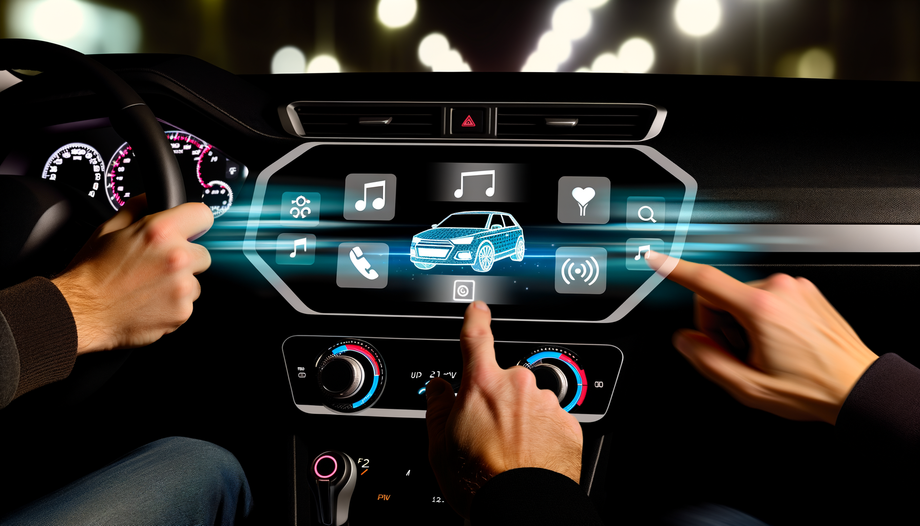In recent years, the automotive industry has witnessed transformative shifts that fundamentally change how we perceive and interact with vehicles. Central to this evolution is the rapid growth of in-vehicle applications, particularly infotainment and navigation features that are becoming increasingly integral to the driving experience. As digital technology becomes more sophisticated and consumers demand greater connectivity, the role of these in-car applications continues to expand, turning the humble vehicle into a sophisticated, internet-enabled interactive platform.
A New Era of Connectivity
Gone are the days when a car was just a means of transport from point A to point B. Today, vehicles are seen as mobile extensions of our digital lives, seamlessly integrating with our smartphones, personal assistants, and other tech gadgets, thanks to a combination of advanced in-vehicle apps.
The demand for a connected car experience is fueled by digital-native consumers who prioritize technology integration. Infotainment systems serve as the backbone for this connected experience, providing entertainment, information, and seamless communication from the driver's seat. These systems are becoming pivotal in how car buyers make purchasing decisions today.
Key Features Driving Demand:
- Seamless Smartphone Integration: Compatibility with platforms like Apple CarPlay and Android Auto allows users to have a familiar smartphone experience within their vehicles, granting access to apps, music, and essential features.
- Rich Media: Enhanced media players capable of streaming music, videos, and podcasts ensure that drivers and passengers remain entertained during journeys.
- Intuitive Navigation Systems: Advanced navigation features that include up-to-the-minute traffic updates, 3D maps, and points of interest, ensuring the best routes and providing peace of mind on any drive.
The Evolution of Navigation Systems
Navigation systems have evolved significantly from simple GPS devices to integrated platforms offering complex data-driven insights. Modern navigation apps come equipped with crowd-sourced traffic conditions, lane guidance, voice commands, and connectivity options that are shaping the way drivers interact with maps and routes.
Why Navigation Features Are Gaining Traction:
- Real-Time Information: Users demand real-time updates, and current navigation solutions combine satellite data, sensor information, and cloud-based processing to ensure that users have the most accurate information at their fingertips.
- Enhanced Safety: With advanced navigation, drivers can receive timely notifications about road hazards, speed limits, and upcoming obstructions.
- Customizable Preferences: Users can tailor navigation apps according to their preferences, whether that's avoiding tolls, prioritizing fuel efficiency, or choosing scenic routes.
Trends Fueling In-Vehicle App Growth
Several trends are bolstering the interest in in-vehicle apps:
- Autonomous Vehicles: As cars move closer to autonomous driving, the emphasis on infotainment grows. Passengers freed from steering tasks might seek more entertainment and engagement options.
- Rise of Electric Vehicles (EVs): With EVs gaining popularity, infotainment systems are crucial for applications like battery monitoring, nearby charging station locations, and optimal route planning.
- Augmented Reality (AR): Innovations like AR are starting to embed within navigation systems, providing turn-by-turn directions projected onto windshields.
- Voice-Activated Controls: With advancement in AI, voice recognition allows safer interactions with devices while driving.
Challenges to Overcome
While the opportunities and growth in this domain are tremendous, the industry must address several challenges:
- Security Concerns: As vehicles become more connected, the risk of cyber threats grows. Protecting user data and ensuring secure interactions remain paramount.
- User Interface Design: For apps to be effective, they need to offer intuitive user interfaces that minimize distractions.
- Connectivity Issues: A consistent internet connection is crucial for most in-vehicle apps. Network availability and speed can affect app performance substantially.
The Road Ahead
Looking towards the future, the symbiosis between the automotive industry and digital technology promises continued innovation in the area of in-vehicle applications. From improved safety features to entertainment options and seamless integration, infotainment, and navigation apps will likely remain at the forefront of this evolution.
The journey doesn't end here, though. As more vehicles connect to the internet and manufacturers continue to innovate, we will witness even more groundbreaking developments that enhance how we experience our drives.
In summary, the transformative power of infotainment and navigation apps is reshaping our interactions with vehicles, offering a multilayered, engaging, and safer driving experience. The demand is only increasing; therefore, it's time for investors, developers, and automotive companies to rethink strategies, ensuring that they remain at the forefront of this burgeoning industry.
Explore Comprehensive Market Analysis of In-vehicle Apps Market
SOURCE -- @360iResearch
